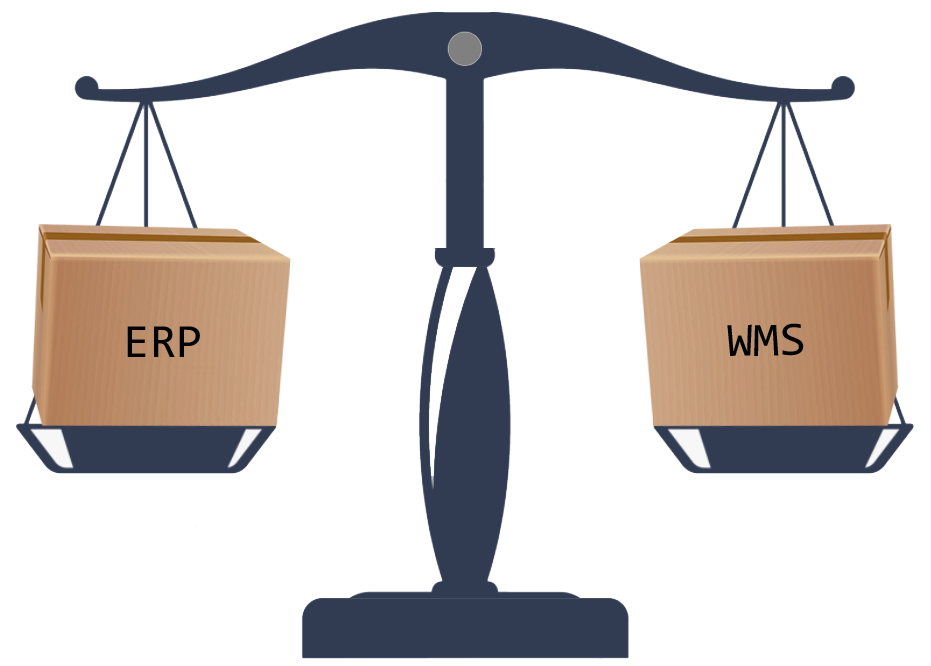Top Six Most Common WMS Mistakes and How to Avoid Them

We’ve looked at common warehouse management software go live pitfalls before, so let’s now zoom out and review common WMS mistakes to avoid. The below list comes from polling our WMS experts on what common errors and issues they are seeing out in the field.
- WMS mistakes to avoid number one too many legacy processes. Sometimes it’s skimping on buying the shiny new scanner that supports the fancy bar-codes, but more commonly this happens when “leftover” processes are kept to keep users happy and to avoid having to spend time training them on the new flow(s). Whether in the name of streamlining or adding new features, generally processes are changed for a good reason in new versions and it behooves the warehouse manager to adopt them (barring instances of bugged versions) into the SOP. Another good reason to disallow them is dated process flows that often come with equally dated code behind them usually involving more customizations, which can be tricky to support and maintain. Even further risky are the “off the books” workarounds which don’t touch the WMS, and obviously these should be banned in your warehouse or distribution center.
- Relying too much on outside vendors versus in-house personnel. There should be at least some knowledge in-house, so when the major fires need to be put out you don’t always have to wait on your vendor. It’s hugely helpful from a change management perspective at every step of the WMS journey, from implementation/upgrades, support/maintenance, and every-day usage. Your people are the most well versed on your setup and processes while having the most skin in the game, and so they would best know how to squeeze every drop of fruitful functionality from the WMS based on your warehouse’s demands. Sometimes it does make sense to bring in the experts, but also know when to rely on the wizened WMS sages amongst your team.
- Lack of a regular order reconciliation process. This tends to be an issue with warehouses that deal with many smaller orders rather then fewer larger ones, as those small orders can sometimes get lost in the shuffle and end up waiting around to be shipped. It occurs so often that there is a term for it called “shrinkage” that’s expressed in the form of a percentage. You must have an official, regular process to validate that all of the orders from the ERP system matches what’s in the WMS. At the very bare-bones least this should be done seasonally for smaller warehouses, though larger warehouses with many smaller orders will need to validate more often possibly even weekly. You would also be well advised to have an official SOP to address discrepancies; which happen due to damage, receiving errors, theft, or mischievous ghosts. Ok, not so much the latter. Encourage fewer of those pesky discrepancies via rewarding the “most accurate and safe” personnel, improving receiving checks, and taking the appropriate security measures to safeguard inventory,

- Spending too much time on edge cases and rare “exception flows” at the expense of losing focus on the key processes. Our top WMS expert insists that on too many occasions he’s witnessed warehouse personnel getting lost in rabbit-hole sidetracks while larger issues go unnoticed. He added that it tends to be more pronounced with people who have theoretical rather than practical experience, and so newbie personnel could be more susceptible. Your managers shouldn’t be hashing out what color of tape-grip to use on the RF scanner guns (admittedly an extreme edge case example), and instead their time would be better spent reviewing the layout and optimizing space utilization.
- WMS mistakes to avoid number five neglecting testing. Don’t strictly rely on manual testing and/or prayers, you should regularly test your supply chain systems to identify errors and validate business processes before production is impacted – as it reduces your business risk. We have a strong recommendation for a complete, low-code test automation solution that makes creating and maintaining test cases as easy as possible, and with a basic-yet-powerful, streamlined interface and readable test cases we encourage you to reach out to us and see for yourself.
- Not paying attention to the latest technology, whether it’s hardware or WMS versions. Keep your industry ear to the ground, and take into account which new tech supports your processes, what would work well with your WMS, and at the end of the day what saves your operation time and money. For example, picking is an area that has greatly improved with newer technologies like voice-picking. Don’t let your competition get their customer orders out faster because you weren’t paying attention to the furious march of progress in the supply chain world.
You might wonder why “unrealistic timelines” isn’t listed as wms mistakes to avoid , and that’s because it’s often a result of one or more of the above. You didn’t adequately test the new patch, the users weren’t trained in advance, and a leftover legacy process slowed things down and so the timeline was blown. Did we miss something above? Drop us a line and let us know!
This post was written by:

James Prior Sales Ops Manager James has been working in software pre-sales and implementation since 2000, and more recently settled into working with a pre-sales team and occasionally writing blog posts. Drop him a line at: james.prior[at]tryonsolutions[dot]com.
Recommended Content
How to Prep and Undertake a Supply Chain Execution Go Live as a Client
You’ve chosen a supply chain execution system (WMS, WLM, etc…) along with a vendor to handle the implementation, and all parties have agreed upon on a timeline. So…What’s next? We can sit around patting each other on the back for finally bringing our operation...
Similarities between Manufacturing Supply Chain and the Human Body
What? Come on now… How can an efficient manufacturing supply chain be similar to a healthy human body? They got nothing to do with each other? One is a living organism…and one is…well…an industrial process. Actually, the count is endless. A well oiled industrial...
6 Tips to Properly Maintain Your Warehouse Management System
Your operation has successfully implemented a warehouse management system. Congratulations, as not all WMS implementations are successful – or so we hear, at Tryon Solutions we don’t have firsthand experience with that. Your next step post-implementation is ensuring...
5 Supply Chain Systems Enhancements for Consumer Goods
Line up! The battle for the top systems enhancements for consumer packaged goods (CPG) companies starts now. Every single supply chain professional has their own list of tools needed and processes required. Every organization has their inventory issues with changes to...
4 Compelling Reasons to Outsource Supply Chain Execution Services
Why would one outsource when it’s technically possible to handle everything in-house? I’m a fan of a nice haircut, and I’m willing to pay a little more to get it. Before coming to this conclusion, I tried a well-known super-cheap option out there (rhymes with...
